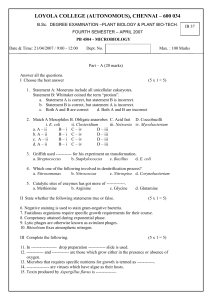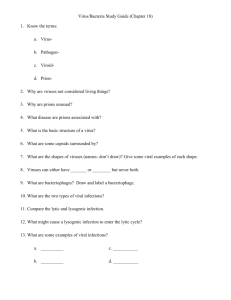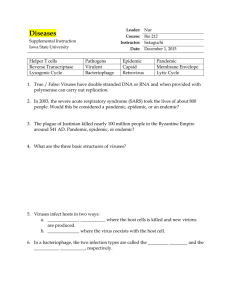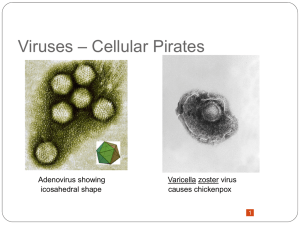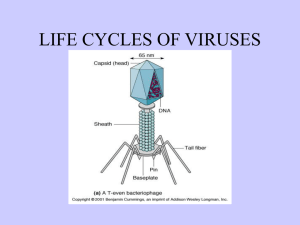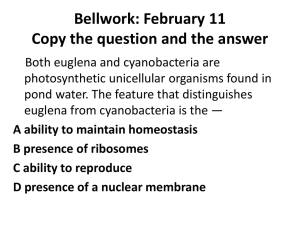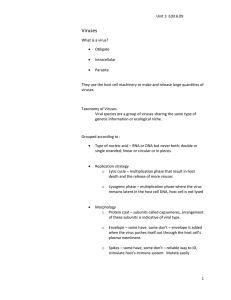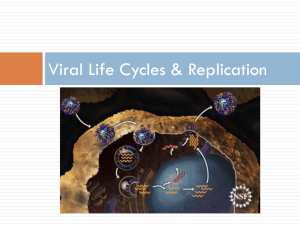Study Guide - Belle Vernon Area School District
advertisement
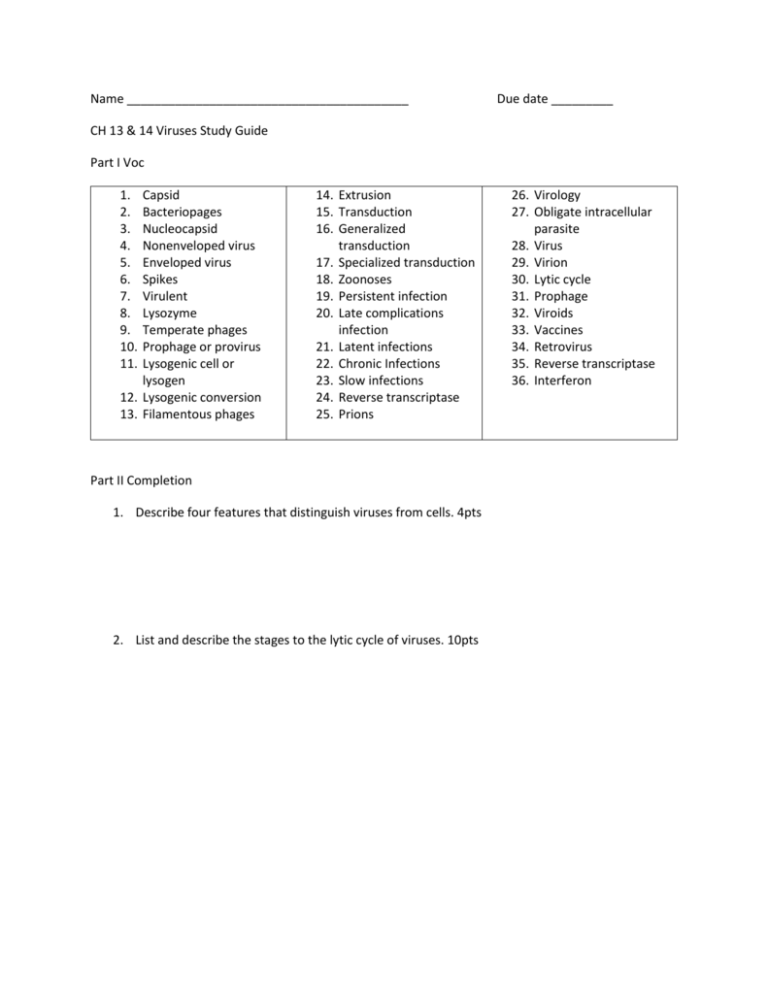
Name _________________________________________ Due date _________ CH 13 & 14 Viruses Study Guide Part I Voc 1. 2. 3. 4. 5. 6. 7. 8. 9. 10. 11. Capsid Bacteriopages Nucleocapsid Nonenveloped virus Enveloped virus Spikes Virulent Lysozyme Temperate phages Prophage or provirus Lysogenic cell or lysogen 12. Lysogenic conversion 13. Filamentous phages 14. Extrusion 15. Transduction 16. Generalized transduction 17. Specialized transduction 18. Zoonoses 19. Persistent infection 20. Late complications infection 21. Latent infections 22. Chronic Infections 23. Slow infections 24. Reverse transcriptase 25. Prions Part II Completion 1. Describe four features that distinguish viruses from cells. 4pts 2. List and describe the stages to the lytic cycle of viruses. 10pts 26. Virology 27. Obligate intracellular parasite 28. Virus 29. Virion 30. Lytic cycle 31. Prophage 32. Viroids 33. Vaccines 34. Retrovirus 35. Reverse transcriptase 36. Interferon 3. Explain lysogenic conversion and give an example of it. 2 pts 4. Distinguish between chronic and latent viral infections. 2 pts 5. Describe the four characteristics used to classify animal viruses. 4 pts 6. Draw a bacteriophage and explain why lysozyme is often used for penetration and release from a host cell while animal and plant viruses do not. 5pts.

